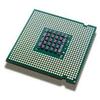Multicore CPU architectures have been established as a structure for general-purpose systems for high-performance processing of applications. Recent multicore CPU has evolved as a system architecture based on non-uniform memory architecture. For the technique of using the kernel space that shifts the tasks to the ideal memory node, the characteristics of the applications of the user-space cannot be considered. Therefore, kernel level approaches cannot execute memory scheduling to recognize the importance of user applications. Moreover, users need to run applications after sufficiently understanding the multicore CPU based on non-uniform memory architecture to ensure the high performance of the user's applications. This paper presents a user-space memory scheduler that allocates the ideal memory node for tasks by monitoring the characteristics of non-uniform memory architecture. From our experiment, the proposed system improved the performance of the application by up to 25% compared to the existing system.
翻译:已经建立了多核心CPU结构,作为高性能应用处理的通用系统结构。最近的多核心CPU已经发展成为一个基于非统一内存结构的系统结构。对于使用内核空间的技术,将任务转向理想的记忆节点,无法考虑用户-空间应用的特性。因此,内核级方法无法执行内存计划,以确认用户应用的重要性。此外,用户需要在充分理解基于非统一内存结构的多核心CPU之后运行应用程序,以确保用户应用的高度性能。本文展示了一个用户-空间内存调度器,通过监测非统一内存结构的特性,为任务分配理想的内存节点。从我们的实验中,拟议的系统使应用的性能比现有系统提高了25%。



